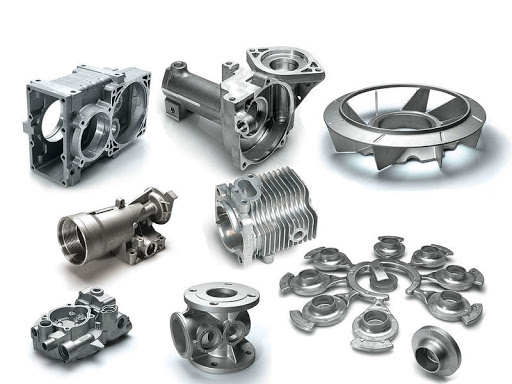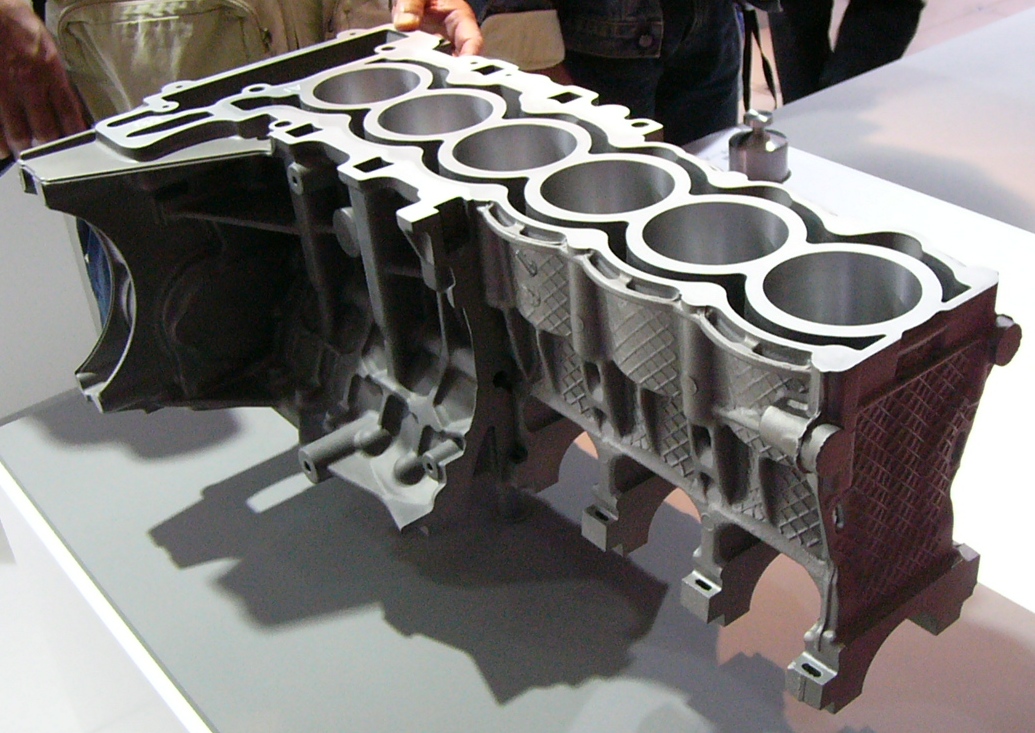Wisconsin Aluminum Foundry and Aluminum Castings: partners in production excellence
Wiki Article
All About Aluminum Castings: Recognizing Their Role and Significance in Production
Light weight aluminum spreadings are important to contemporary production, supplying a mix of light-weight properties and sturdiness. They facilitate complicated designs while minimizing assembly expenses. Industries such as aerospace and auto often use these parts for improved efficiency. The production of aluminum spreadings is not without its difficulties. Understanding the nuances of this procedure reveals both the benefits and possible mistakes. Discovering these elements will certainly offer much deeper understandings right into their expanding value.Introduction of Aluminum Casting Processes
Light weight aluminum casting processes play an important function in manufacturing, providing versatility and efficiency. These procedures entail pouring liquified aluminum right into mold and mildews to produce accurate forms and parts. Numerous techniques are employed, consisting of sand spreading, die spreading, and investment casting, each distinguished by its method of mold production and the desired application.Sand spreading utilizes a mix of sand and binder to develop mold and mildews, enabling complex geometries. Die casting, on the various other hand, entails compeling molten light weight aluminum into metal molds, resulting in high accuracy and smooth finishes. Financial investment spreading, typically used for elaborate styles, involves producing a wax pattern covered with a ceramic covering, which is then loaded with liquified aluminum.
These casting approaches accommodate diverse industrial demands, making light weight aluminum a favored product for components in sectors such as automobile, aerospace, and durable goods. The choice of casting technique significantly influences the final product's high quality and performance.
Advantages of Using Aluminum Castings
The benefits of making use of light weight aluminum castings in manufacturing are significant and countless. To start with, light weight aluminum's light-weight nature contributes to reduced overall item weight, boosting power effectiveness in applications such as aerospace and auto sectors. In addition, light weight aluminum castings exhibit superb deterioration resistance, guaranteeing longevity and resilience in harsh environments. The product's electrical and thermal conductivity also makes it ideal for different applications, including electronic devices and heat exchangers.Furthermore, light weight aluminum castings can be produced with detailed styles, allowing for extra complicated shapes that fulfill particular functional needs. This flexibility contributes to lowered assembly prices and enhanced layout versatility. Furthermore, the spreading process itself is reliable, allowing for high-volume production with constant quality. Ultimately, aluminum is recyclable, making it an eco-friendly alternative in production. Jointly, these advantages highlight why light weight aluminum castings are progressively preferred across diverse markets, offering both performance benefits and financial efficiency.
Typical Applications of Aluminum Castings
While different materials are made use of in production, aluminum castings stick out due to their broad variety of applications throughout multiple markets. These spreadings are extensively utilized in the vehicle field for engine components, transmission housings, and structural parts, adding to lighter lorries and improved fuel effectiveness. In the aerospace market, aluminum castings are important for aircraft elements, where weight reduction is vital for performance and safety.Furthermore, the electrical industry employs aluminum spreadings for real estates and architectural elements in machinery, taking advantage of the product's exceptional conductivity. In durable goods, aluminum spreadings can be discovered in things such as appliances and sporting equipment, offering sturdiness and a modern visual. The construction sector makes use of light weight aluminum castings in architectural components, window frames, and components, showcasing their convenience and stamina. Generally, aluminum castings play an important duty in improving product performance and performance across various sectors.
Trick Production Techniques for Light Weight Aluminum Castings
The manufacturing of aluminum castings depends on different methods, with sand spreading and die casting being among one of the most popular. Sand spreading involves developing molds from sand, allowing for big parts and detailed styles. In comparison, die casting utilizes high-pressure injection of molten light weight aluminum right into recyclable molds, supplying precision and effectiveness for mass production.Sand Casting Refine
Sand casting stands as one of one of the most widely used approaches for generating aluminum spreadings, many thanks to its convenience and cost-effectiveness. This process entails creating a mold and mildew from a mixture of sand and a bonding representative, generally clay. Once the mold and mildew is prepared, liquified light weight aluminum is put right into it, permitting the metal to fill up the tooth cavity. After cooling down, the mold and mildew is damaged away to reveal the spreading. Sand spreading suits complex geometries and huge parts, making it ideal for different applications. In addition, it enables simple modifications, making it possible for producers to change designs quickly. However, the surface finish may require added machining for precise applications, ensuring the final product satisfies high quality standards.Die Casting Methods
Die casting represents a highly effective method for producing light weight aluminum castings, characterized by its ability to deliver high accuracy and superb surface area coating. This strategy mostly involves forcing liquified light weight aluminum right into a mold and mildew under high stress, ensuring that elaborate forms and great details are recorded properly. There are two major die casting methods: warm chamber and cold chamber. Hot chamber pass away spreading is appropriate for alloys with low melting factors and enables for faster cycles, while cold chamber pass away casting is ideal for high-temperature alloys, calling for different melting systems. Both methods improve production prices and minimize material waste, making die casting a preferred option in industries such as auto and electronics, where resilience and dimensional precision are extremely important.Sustainability in Aluminum Spreading Manufacturing
While the demand for aluminum spreadings proceeds to expand, producers are progressively focusing on sustainability in their manufacturing processes. This change is driven by the need to decrease ecological impact and save natural sources. Many business are adopting recycling campaigns, using scrap aluminum, which significantly lowers energy intake and greenhouse gas discharges contrasted to primary aluminum production. Furthermore, advancements in casting modern technologies are enabling a lot more reliable use products, decreasing waste during the production procedure.Manufacturers are likewise exploring eco-friendly options to standard spreading methods, such as 3D printing and advanced mold modern technologies, which help enhance source usage. Aluminum Castings. In addition, executing sustainable methods in supply chain monitoring warranties that basic materials are sourced responsibly. Consequently, the aluminum casting sector is making strides towards a much more lasting future, lining up with international ecological objectives while meeting the boosting need for high-performance light weight aluminum items
Difficulties and Factors To Consider in Aluminum Spreading
Light weight aluminum casting presents different difficulties that producers need to navigate to assure product integrity. Layout complexity can complicate the casting procedure, bring about possible flaws and boosted manufacturing time. Furthermore, preserving rigorous quality control requirements is vital to fulfill the needs of precision and reliability in ended up elements.
Layout Intricacy Issues
Creating elements for light weight aluminum spreading provides different intricacies that engineers should browse to achieve ideal results. One considerable obstacle is the requirement for accurate geometry; intricate designs can lead to troubles in mold creation and raised danger of defects. Additionally, thermal residential or commercial properties of light weight aluminum require cautious consideration of cooling down prices, as uneven air conditioning can trigger warping. Wall surface thickness variants additionally present a difficulty, as they can affect flow features and architectural stability. Designers should stabilize design appearances with manufacturability, making sure that features such as fillets and ribs are maximized for stamina without complicating the spreading process. Considerations concerning draft angles are necessary to help with mold and mildew launch, further making complex the design procedure. These variables collectively emphasize the intricacies associated with light weight aluminum spreading design.Quality Assurance Challenges
Accomplishing high-grade light weight aluminum spreadings includes steering an array of quality assurance obstacles that can substantially influence the end product. First, variants in basic material composition can lead to variances in casting residential or commercial properties, making it vital to assure material quality. Second, the casting process itself is prone to problems, such as porosity and contraction, which can endanger architectural honesty. Additionally, temperature control during melting and putting is crucial; changes can lead to irregular solidification, impacting dimensional accuracy. Furthermore, detailed evaluation methods, consisting of non-destructive testing, should be utilized to recognize issues early. Finally, maintaining rigorous procedure documents and adherence to industry standards is indispensable for traceability and high quality assurance, highlighting the elaborate equilibrium called for to create trustworthy aluminum spreadings in production.Future Trends in Light Weight Aluminum Casting Modern Technology
As suppliers strive to boost efficiency and pop over to these guys sustainability, advancements in light weight aluminum spreading innovation are arising to satisfy these needs. One substantial trend is the assimilation of automation and man-made knowledge, which enhance production processes and boost precision in casting procedures. These advancements lessen human error and maximize resource usage, inevitably bring about cost reductions.In addition, the adoption of sophisticated products and alloys is reshaping the landscape. New formulations improve efficiency characteristics, such as rust resistance and light-weight homes, making aluminum castings extra flexible throughout numerous industries.
In addition, sustainable practices are acquiring grip, with an emphasis on recycling and find out here now minimizing waste. Techniques such as 3D printing are also being discovered to produce complicated geometries that were previously unattainable
Regularly Asked Questions

Just How Do Light Weight Aluminum Castings Compare to Various Other Products?
Light weight aluminum castings supply benefits such as lightweight, deterioration resistance, and exceptional thermal conductivity compared to other products. They are usually liked for applications calling for sturdiness and performance, specifically in aerospace and vehicle sectors.What Is the Life-span of Light Weight Aluminum Castings?
The life-span of light weight aluminum spreadings commonly ranges from 10 to 50 years, depending on environmental problems, use, and maintenance. Their corrosion resistance and resilience contribute noticeably to their lasting performance in various applications.Can Aluminum Castings Be Reused?
Yes, light weight aluminum castings can be recycled. The reusing process is efficient, allowing for the recovery of light weight aluminum without considerable loss of top quality, making it a lasting choice in production and minimizing ecological impact.What Precaution Are Needed During Aluminum Spreading?
Throughout light weight aluminum casting, crucial precaution include putting on appropriate individual safety equipment, ensuring correct ventilation, maintaining devices, using fire-resistant materials, and carrying out safe taking care of protocols for liquified steel to stop crashes and injuries.Just How Do Temperature Level Modifications Affect Light Weight Aluminum Castings?
Temperature level adjustments significantly affect light weight aluminum spreadings by affecting fluidity, solidification prices, and mechanical buildings. Rapid air conditioning can bring about enhanced brittleness, while steady cooling advertises better structural Check Out Your URL integrity and lowers the threat of problems.Pass away spreading, on the other hand, entails forcing molten light weight aluminum right into metal molds, resulting in high precision and smooth coatings. The production of aluminum castings relies on numerous strategies, with sand casting and pass away casting being among the most popular. Sand casting stands as one of the most extensively utilized methods for creating aluminum spreadings, many thanks to its convenience and cost-effectiveness. Die spreading stands for a very efficient approach for producing aluminum spreadings, identified by its capacity to deliver high precision and superb surface area coating. While the demand for aluminum spreadings proceeds to expand, suppliers are progressively prioritizing sustainability in their production processes.
Report this wiki page